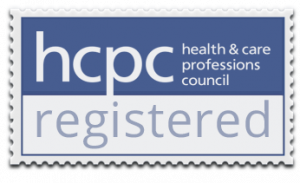 Understanding and managing change in business, is a particularly positive skill. Many of us run businesses and understanding how people think, and what they need in order to operate effectively, can be very useful.
Understanding and managing change in business, is a particularly positive skill. Many of us run businesses and understanding how people think, and what they need in order to operate effectively, can be very useful.
As a psychologist I have a hybrid skill. I understand how business works and I understand people. So, asking me to help businesses strategically managing change, may not initially seem useful, until you realise we have a lot of experience in supporting people
How do you begin?
The place to start is in understanding your comfort zone. When you think about what a comfort zone actually is, a few things come to mind. Probably, not many executives like to live in it! And this is true. The comfort zone is a psychological & physical space that represents an individual’s enjoyable and easy place to live. It doesn’t mean they are not stretched, but they are not stressed whilst operating in here.
For many executives their comfort zone becomes boring and so for us, we look to live above it. I sometimes struggle with what to call this area, but I think the closest is to refer to it as the ‘challenge zone’. Often, if you receive negative news, you are unlikely to see it as a challenge! However, the more you get used to changing your life, the more you realise that you grow. Growth is important as it builds skill and more than that, it builds resilience.
There are a number of features of the comfort zone that are useful to know about. These refer to the type of thing that people enjoy. If these features are in place, then you are in the zone. If a situation pushes you out of your comfort zone, it is likely to be because one of these has been altered. To explain; the first feature is the amount of control you feel you have in your life. When you feel you have control, you are much more positive about a situation. The next is how confident you feel. With confidence, people can handle a lot.
That brings me to the third, which is how well they feel they are coping. This might have a lot to do with capability.. The 4th lever is how much choice they feel they have. When we are in a situation by choice, we are better prepared. The final two relate to how familiar a situation is and also how much we trust the person asking us to cope. Trust is probably one of the biggest of all. If we cannot trust the person who is making the changes around us, then we are very likely to struggle.
Using positive language
My own observations also include that if a situation can in any way be positioned as a positive improvement on where you are now, please consider using positive language to influence how someone will react. Just like the word redundancy, the word ‘change’ tends to influence someone and often make them feel quite negative.. That’s before you have even begun to explain. It helps a lot, if you can use more positive language such as to alter something, modify, improve, or adjust it. I respect the fact that this may be downplaying the issue. In certain relevant circumstances, this can be important.
What are the typical reasons why people don’t like change?
The number one reason why people do not like change is because of their previous experience. So, if you help them hear that the change is not huge, they are more likely to be onboard.
The second most common reason is because executives are wired quite differently. We are used to problem solving and decision making 24/7. This genuinely enables us to adapt quickly to most situations. We hover above them and strategically analyse things enabling us to quickly determine a plan of action. Many people do not have this skill and therefore get easily overwhelmed and much more nervous. Where we make decisions frequently and rarely change our minds, other people make far fewer decisions and change their minds often.
So, an executive’s capacity for change can often be quite high. It means in general, living outside of their comfort zone is less stressful for them. That is unless two things are in place. Firstly, that they feel they are unable to control a situation, and secondly, that they do not have a solution. Both of these are more unusual. Wherever they are present, it can cause a lot of frustration. Other reactions to this include attempting to increase their grip which means they begin to micromanage something. This risks annoying people, or they try to increase the speed with which things are getting done. Speed is a natural reaction for top managers because they want progress. When they get that they feel effective and so does the process.
Other people on the other hand, are much more comfortable when the situation is secure, stable, or consistent. As you read this, if you are an executive this could make you feel nervous. But there is no reason for that. Security and stability do not mean permanently unable to do something. They simply mean it is better not to move the goal posts unnecessarily. So, try to avoid doing too many things at once. Keep people informed about how it is going and this is what it means to be consistent I feel.
The third most common reason why people don’t like change is because businesses can often make common mistakes.
What are the common mistakes when managing change?
Amongst these, is the general tendency to try and do too much. This is what destabilises an individual’s ability to focus. We are surrounded by masses of information now and struggle to process what is a priority over what is not. So, the value in not doing too much at any one time, is that many people understand better what it is you need. They way they are able to actually achieve it. Not giving people enough time to adapt upsets stability. Not giving them sufficient explanation as to why and what you are doing, reduces their security.
If it was possible to get these things right and ensure regular communication and a progress report as you go, then this is how to manage change. That way people don’t assume the worst and instead get clarity on what you want.
They are much less likely to resist it. So, resistance to change is not usually to everything you are doing, it is mostly to ‘overwhelm’. The main point here is that like it or not, it is not what you say in life, but what people hear that matters. Even further, it is not what you say but it is what they do with it that matters. So, in my experience, it can help you enormously if you not only tell them what you are going to do but tell them what is not going to alter or change too. This avoids them filling any gaps with assumptions. They can then presume life will become uncomfortable and anticipate fear.
Introducing a model: The Success Framework
When it comes to enabling people to manage change, getting your key messages right from the start really helps. To do that it can be great to use a particular model. I feel this tool below enables the top team to be on the same page prior to talking to anyone else within the business
Even if you already have several projects on the go, it can be worth applying this tool. It is a framework for success. If you look at the diagram below, I have drawn a large A. This refers to where the business is right now.
The questions that circle it, enable you to really focus where the business is and celebrate how far you have come. This is because everybody loves celebrating achievements, especially when you consider we have all been through an unprecedented time with COVID. You then tackle why you cannot stay at A. Move on to answering what needs to modify, alter, or improve. Finally, attempt to answer the question about what is not changing. With these answers, I feel a business is better prepared prior to communicating to the rest of the company.

When you then look at part two of the model below, I have drawn a large C. Encircling this capital letter are all the questions that help expand on what you want. Where do you want or need to get to? Getting alignment over what the rest of the top team thinks this is, can be eye opening! Repeating to your staff why they cannot stay at A is an important first step. This is so they are encouraged to want what you want. Follow that up with what’s in it for the business and for them. If you achieve what you have set yourself, then you have a win: win. Without this, it can often be potluck that people hear what you think you are saying.

The 3rd and final part of the model is to represent this rather like a ladder. Referring to A on the left and C on the right, the ladder represents small, bite size chunks.

This may seem initially logical and obvious but I am often stunned at how long senior people want these bite size chunks to be. A ‘chunk’ represents either a period of time, or a section of a project. Ideally, I recommend no more than two months as a phase of a project when initially embedding the model.
Your main aim is to use these touchpoints as an opportunity to keep revisiting the key messages. So, each two-month period, you celebrate achievements, thank everybody, and reconnect with the big C you are heading towards. As you go, people are kept informed, feel better involved, can see what’s being achieved, and stay connected.
Conclusions:
The next project you want to do can use this model right from the beginning. In my experience, people are much more likely to come on board. This is especially the case where they can see clarity and relevance in what you want to achieve.
Getting a change process right can feel like a full time PR job. We often involve a PR company when we need to externally influence clients. But, it is quite possible that spending time altering your internal messaging like this, could achieve the same. In my experience, it pays off. The benefit is obvious. More people stay in the business instead of leaving. They talk about your management of them positively, and their overall experience of being employed by you is a good one.
Strategically Managing Change is a topic I’m finding myself frequently asked to speak about at the moment. I have honed the message and covered it in a 45-minute webinar right through to a 3-hour workshop. Both of these I am grateful to find have been well received. If you feel I can do anything useful for your business, please do complete our contact form on my website or get in touch.
Good luck and I wish you well,
Sue


